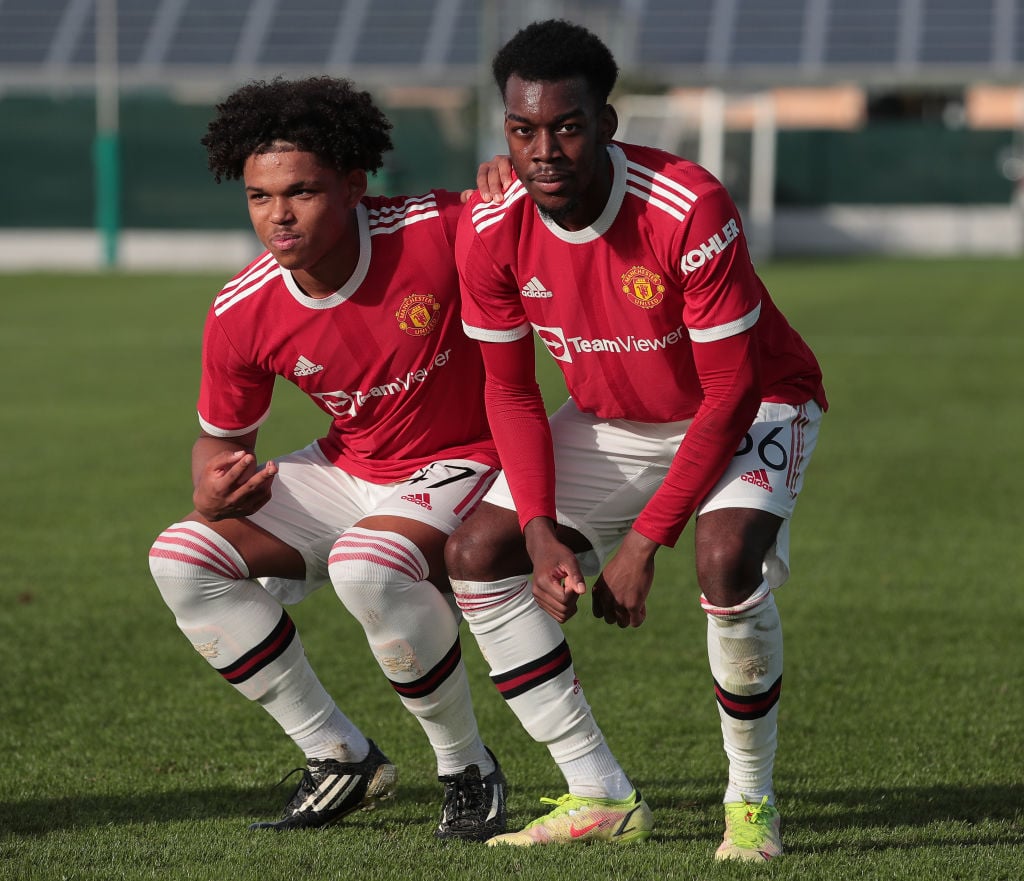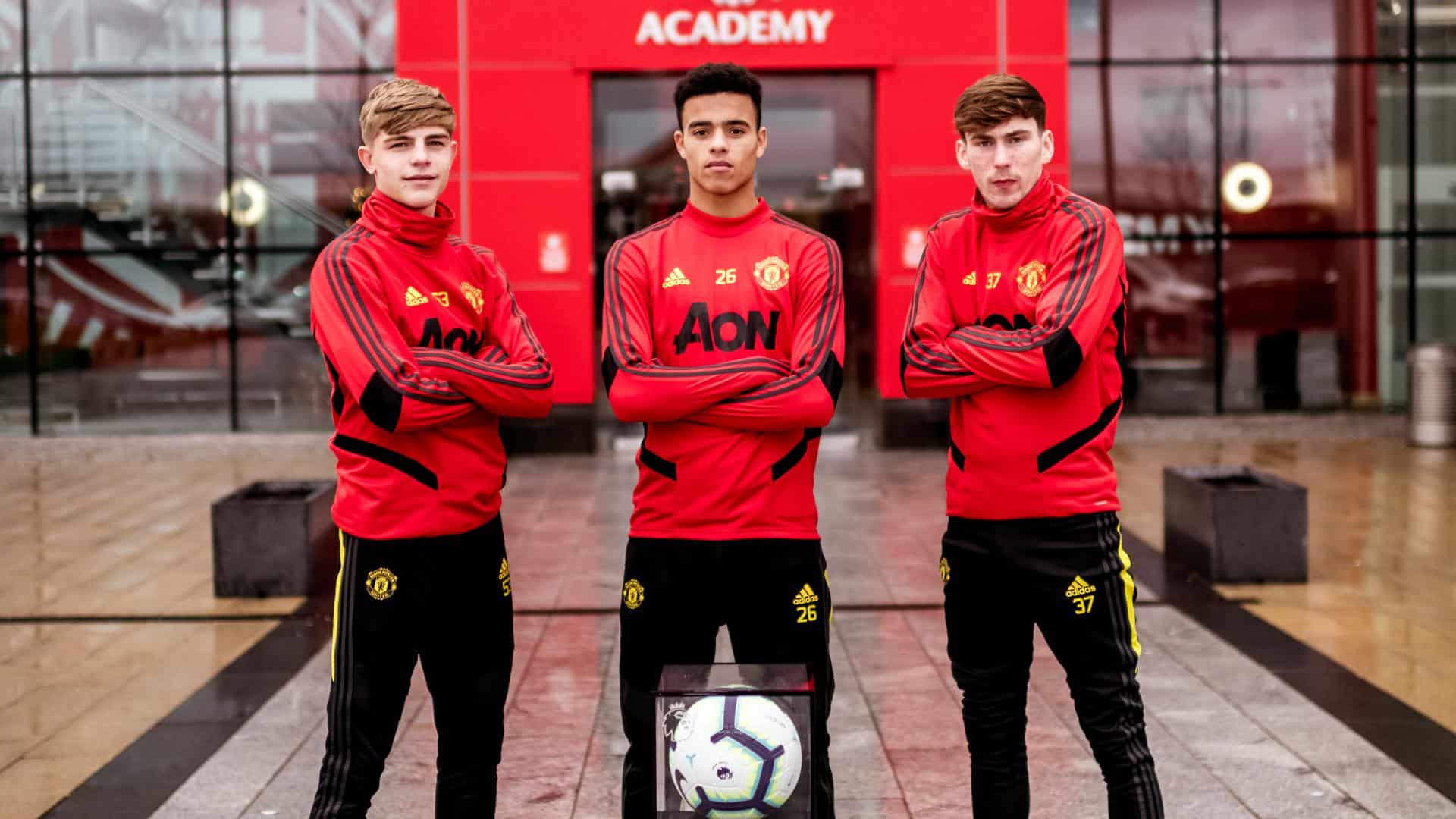Manchester United Youth Academy: The Cradle Of Footballing Legends
Manchester United Youth Academy has been the backbone of one of the world's most successful football clubs. It’s not just a training ground; it’s a breeding ground for talent, ambition, and dreams. From the streets of Manchester to the hallowed turf of Old Trafford, this academy has shaped countless careers and inspired generations. If you're a football enthusiast, you've probably heard about the incredible journey of players who started their careers here. So, buckle up because we’re diving deep into the heart of this legendary institution!
Football fans around the globe have long admired Manchester United for its rich history and consistent success on the pitch. But what many don’t realize is that much of this success stems from the club’s commitment to nurturing young talent. The youth academy plays a pivotal role in maintaining the club’s dominance, and it’s where the magic begins for many future stars.
This isn't just about football; it's about passion, perseverance, and the relentless pursuit of excellence. Whether you're a die-hard fan or simply curious about how top clubs develop their players, this article will give you an inside look at what makes Manchester United Youth Academy so special. Let’s get started!
Read also:Kaylee Hartungs Journey Through Eye Surgery A Comprehensive Guide
Introduction to Manchester United Youth Academy
The Manchester United Youth Academy, often referred to as "The Busby Babes," is a testament to the club's dedication to developing homegrown talent. Founded in the 1930s, it has grown into one of the most prestigious academies in the world. The academy focuses on identifying raw talent early and refining it through rigorous training and mentorship.
History and Legacy
Back in the day, when Matt Busby took over as manager in the 1940s, he had a vision. He believed in building a team from within, and that vision came to life with the formation of the youth academy. Over the decades, the academy has produced some of the greatest names in football history. Players like George Best, Ryan Giggs, and Paul Scholes all began their illustrious careers here.
Key Milestones
The academy's history is dotted with significant milestones. In the 1950s, the Busby Babes tragically lost several players in the Munich air disaster, but the club rebuilt stronger than ever. Fast forward to the 1990s, and you have the famous "Class of '92," a group of young players who went on to dominate both domestically and internationally.
- 1950s - The Busby Babes Era
- 1992 - The Emergence of the Class of '92
- 2000s - Continued Success with Homegrown Talent
The Structure of the Academy
So, how does the academy work? It’s not just about kicking a ball around. The structure is meticulously designed to maximize player development. From the Under-9s to the Under-23s, each level focuses on specific skills and attributes necessary for professional football.
Age Groups and Development Phases
Players are grouped by age, and each group undergoes a tailored program. The younger age groups focus on technical skills and creativity, while the older groups emphasize tactical awareness and physical conditioning.
- Under-9s to Under-12s - Technical Skill Development
- Under-13s to Under-16s - Tactical Understanding
- Under-17s to Under-23s - Professional Readiness
Scouting and Recruitment
Identifying talent is crucial, and Manchester United has one of the most extensive scouting networks in the world. Scouts travel far and wide to find the next big thing. But it’s not just about raw talent; character and attitude play a huge role in the selection process.
Read also:Unveiling The Potential Of Sotwe Turk Ifsa
What Scouts Look For
When evaluating potential academy recruits, scouts look for a combination of physical attributes, technical skills, and mental toughness. Players who show a willingness to learn and adapt are often given preference.
- Technical Proficiency
- Tactical Awareness
- Mental Resilience
Training Programs
Training at the academy is intense and structured. Players undergo daily sessions that focus on improving their skills, fitness, and mental strength. The facilities at Carrington, the club's training complex, are world-class, providing everything a young player needs to excel.
Key Components of Training
The training regimen includes a mix of on-field practice, gym sessions, and video analysis. Nutrition and recovery are also emphasized, ensuring players are in peak condition.
- On-Field Practice
- Physical Conditioning
- Video Analysis
Success Stories
Let’s talk about the stars who have emerged from the academy. The list is long and illustrious, but a few names stand out. Ryan Giggs, Paul Scholes, and Gary Neville are just a few examples of players who have gone on to have successful careers with the first team.
Class of '92
Perhaps the most famous group to come out of the academy is the Class of '92. This group included players like David Beckham, Nicky Butt, and Phil Neville, all of whom played pivotal roles in Manchester United's dominance during the late 1990s and early 2000s.
Challenges and Criticisms
Despite its success, the academy isn’t without its challenges. Critics argue that the focus on youth can sometimes come at the expense of immediate results. However, the club remains committed to its philosophy, believing that long-term success is built on a solid foundation of homegrown talent.
Addressing Criticism
The academy addresses criticism by continuously evolving its methods and adapting to the changing landscape of modern football. Feedback from players and coaches is taken seriously, and improvements are made accordingly.
International Influence
The academy’s influence extends beyond Manchester. Players who don’t make it to the first team often find success at other clubs, spreading the Manchester United way of playing around the world.
Global Impact
Many former academy players have gone on to represent their countries on the international stage. This global reach is a testament to the quality of training and development provided by the academy.
Future Plans
Looking ahead, the academy is focused on expanding its reach and improving its facilities. Investment in technology and data analytics will play a key role in identifying and nurturing talent in the future.
Innovative Approaches
New approaches to player development are being explored, including partnerships with universities and sports science institutions. The goal is to provide players with a holistic education that prepares them for life both on and off the pitch.
Conclusion
Manchester United Youth Academy is more than just a place where young players learn the game; it’s a place where dreams are realized and legends are born. From its humble beginnings to its current status as one of the world's leading academies, the institution has consistently delivered top-tier talent to the football world.
As we’ve seen, the academy’s success is built on a foundation of hard work, dedication, and a commitment to excellence. Whether you’re a fan of the club or simply interested in how top football academies operate, there’s no denying the impact Manchester United Youth Academy has had on the sport.
So, what’s next? We invite you to share your thoughts in the comments below. Have you followed the journey of any academy graduates? Are there any aspects of the academy you’d like to know more about? Let us know, and don’t forget to check out our other articles for more insights into the beautiful game!
Table of Contents
- Introduction to Manchester United Youth Academy
- History and Legacy
- The Structure of the Academy
- Scouting and Recruitment
- Training Programs
- Success Stories
- Challenges and Criticisms
- International Influence
- Future Plans
- Conclusion


